#autonomous system
Explore tagged Tumblr posts
Text
Sensors in Autonomous Vehicles

Sensors in Autonomous Vehicles
Introduction
The entire discussion on Sensors in Autonomous Vehicles consists of one major point – will the vehicle’s brain (i.e., the computer) be able to make decisions just like a human brain does?
Now whether or not a computer can make these decisions is an altogether different topic, but it is just as important for an automotive company working on self-driving technology to provide the computer with the necessary and sufficient data to make decisions.
This is where sensors, and in particular, their integration with the computing system comes into the picture.
Types of Sensors in Autonomous Vehicles:
There are three main types of Sensors in Autonomous Vehicles used to map the environment around an autonomous vehicle – vision-based (cameras), radio-based (radar), and light/laser-based (LiDAR).
These three types of Sensors in Autonomous Vehicles have been explained below in brief:
Cameras
High-resolution video cameras can be installed in multiple locations around the vehicle’s body to gain a 360° view of the surroundings of the vehicle. They capture images and provide the data required to identify different objects such as traffic lights, pedestrians, and other cars on the road.
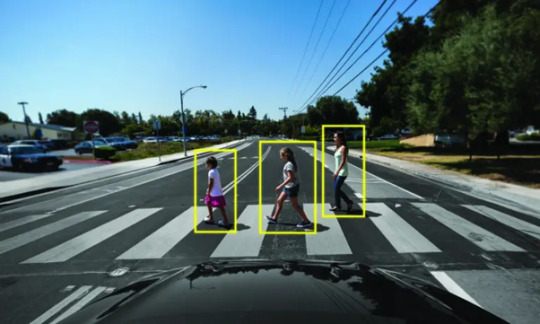
Source: How Does a Self-Driving Car See? | NVIDIA Blog
The biggest advantage of using data from high-resolution cameras is that objects can be accurately identified and this is used to map 3D images of the vehicle’s surroundings. However, these cameras don’t perform as accurately in poor weather conditions such as nighttime or heavy rain/fog.
Types of vision-based sensors used:
Monocular vision sensor
Monocular vision Sensors in Autonomous vehicles make use of a single camera to help detect pedestrians and vehicles on the road. This system relies heavily on object classification, meaning it will detect classified objects only. These systems can be trained to detect and classify objects through millions of miles of simulated driving.
When it classifies an object, it compares the size of this object with the objects it has stored in memory. For example, let’s say that the system has classified a certain object as a truck.
If the system knows how big a truck appears in an image at a specific distance, it can compare the size of the new truck and calculate the distance accordingly.
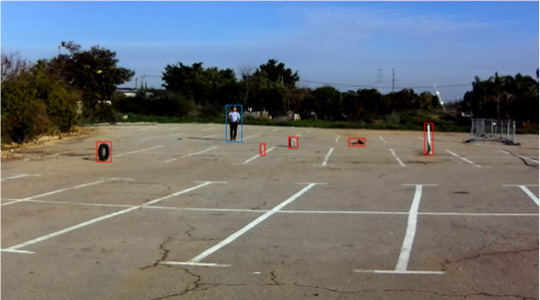
A test scene with detected classified (blue bounding box) and unclassified objects (red bounding box). Source: https://www.foresightauto.com/stereo-vs-mono/
But if the system encounters an object which it is unable to classify, that object will go undetected. This is a major concern for autonomous system developers.
Stereo vision sensor
A stereo vision system consists of a dual-camera setup, which helps in accurately measuring the distance to a detected object even if it doesn’t recognize what the object is.
Since the system has two distinct lenses, it functions as a human eye and helps perceive the depth of a certain object.
Since both lenses capture slightly different images, the system can calculate the distance between the object and the camera based on triangulation.

Sensors in Autonomous Vehicles
Source: https://sites.tufts.edu/eeseniordesignhandbook/files/2019/05/David_Lackner_Tech_Note_V2.0.pdf
Radar Sensors in Autonomous Vehicles
Radar Sensors in Autonomous Vehicles make use of radio waves to read the environment and get an accurate reading of an object’s size, angle, and velocity.
A transmitter inside the sensor sends out radio waves and based on the time these waves take to get reflected back to the sensor, the sensor will calculate the size and velocity of the object as well as its distance from the host vehicle.
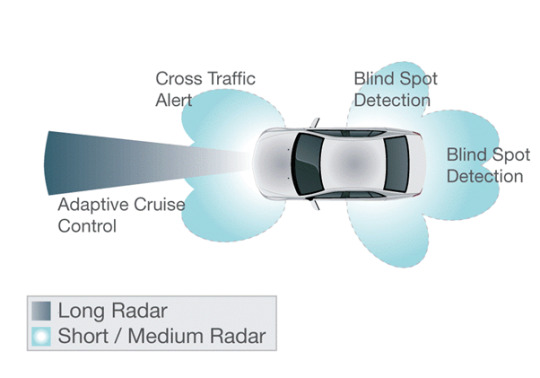
Sensors in Autonomous Vehicles
Source: https://riversonicsolutions.com/self-driving-cars-expert-witness-physics-drives-the-technology/
Radar sensors have been used previously in weather forecasting as well as ocean navigation. The reason for this is that it performs quite consistently across a varying set of weather conditions, thus proving to be better than vision-based sensors.
However, they are not always accurate when it comes to identifying a specific object and classifying it (which is an important step in making decisions for a self-driving car).
RADAR sensors can be classified based on their operating distance ranges:
Short Range Radar (SRR): (0.2 to 30m) – The major advantage of short-range radar sensors is to provide high resolution to the images being detected. This is of utmost importance, as a pedestrian standing in front of a larger object may not be properly detected in low resolutions.
Medium Range Radar (MRR): 30 to 80m
Long-Range Radar (LRR): (80m to more than 200m) – These sensors are most useful for Adaptive Cruise Control (ACC) and highway Automatic Emergency Braking (AEB) systems.
LiDAR sensors
LiDAR (Light Detection and Ranging) offers some positives over vision-based and radar sensors. It transmits thousands of high-speed laser light waves, which when reflected, give a much more accurate sense of a vehicle’s size, distance from the host vehicle, and its other features.
Many pulses create distinct point clouds (a set of points in 3D space), which means a LiDAR sensor will give a three-dimensional view of a certain object as well.

Sensors in Autonomous Vehicles
Source: How LiDAR Fits Into the Future of Autonomous Driving
LiDAR sensors often detect small objects with high precision, thus improving the accuracy of object identification. Moreover, LiDAR sensors can be configured to give a 360° view of the objects around the vehicle as well, thus reducing the requirement for multiple sensors of the same type.
The drawback, however, is that LiDAR sensors have a complex design and architecture, which means that integrating a LiDAR sensor into a vehicle can increase manufacturing costs multifold.
Moreover, these sensors need high computing power, which makes them difficult to be integrated into a compact design.
Most LiDAR sensors use a 905 nm wavelength, which can provide accurate data up to 200 m in a restricted field of view. Some companies are also working on 1550 nm LiDAR sensors, which will have even better accuracy over a longer range.
Ultrasonic Sensors
Ultrasonic Sensors in Autonomous Vehicles are mostly used in low-speed applications in automobiles.
Most parking assist systems have ultrasonic sensors, as they provide an accurate reading of the distance between an obstacle and the car, irrespective of the size and shape of the obstacle.
The ultrasonic sensor consists of a transmitter-receiver setup. The transmitter sends ultrasonic sound waves and based on the time period between transmission of the wave and its reception, the distance to the obstacle is calculated.

Sensors in Autonomous Vehicles
Source: Ultrasonic Sensor working applications and advantages
The detection range of ultrasonic sensors ranges from a few centimetres to 5m, with an exact measurement of distance.
They can also detect objects at a very small distance from the vehicle, which can be extremely helpful while parking your vehicle.
Ultrasonic sensors can also be used to detect conditions around the vehicle and help with V2V (vehicle-to-vehicle) and V2I (vehicle-to-infrastructure) connectivity.
Sensor data from thousands of such connected vehicles can help in building algorithms for autonomous vehicles and offers reference data for several scenarios, conditions and locations.
Challenges in handling sensors
The main challenge in handling sensors is to get an accurate reading from the sensor while filtering out the noise. Noise means the additional vibrations or abnormalities in a signal, which may reduce the accuracy and precision of the signal.
It is important to tell the system which part of the signal is important and which needs to be ignored. Noise filtering is a set of processes that are performed to remove the noise contained within the data.
Noise Filtering
The main cause for uncertainty being generated through the use of individual sensors is the unwanted noise or interference in the environment.
Of course, any data picked up by any sensor in the world consists of the signal part (which we need) and the noise part (which we want to ignore). But the uncertainty lies in not understanding the degree of noise present in any data.
Normally, high-frequency noise can cause a lot of distortions in the measurements of the sensors. Since we want the signal to be as precise as possible, it is important to remove such high-frequency noise.
Noise filters are divided into linear (e.g., simple moving average) and non-linear (e.g., median) filters. The most commonly used noise filters are:
Low-pass filter – It passes signals with a frequency lower than a certain cut-off frequency and attenuates signals with frequencies higher than the cut-off frequency.
High-pass filter – It passes signals with a frequency higher than a certain cut-off frequency and attenuates signals with frequencies lower than the cut-off frequency.
Other common filters include Kalman filter, Recursive Least Square (RLS), Least Mean Square Error (LMS).
Autonomous Vehicle Feature Development at Dorle Controls
At Dorle Controls, we strive to provide bespoke software development and integration solutions for autonomous vehicles as well.
This includes individual need-based application software development as well as developing the entire software stack for an autonomous vehicle. Write to [email protected] to know more about our capabilities in this domain.
Boost Your Knowledge More
0 notes
Text
I had the worst dysautonomia attack last night. Just absolutely horrendous, almost wanted to go to the ER levels of debilitating.
Couldn’t figure out what triggered it. Surely if I was going to have an attack it would have been during that absolutely wild weather we had the night before? So why now, why last night?
My period showed up today 🫠
It really does just fucking destroy everything.
#chronic health tag#my body: is this a normal hormonal event?#also my body: shut down the autonomic nervous system
437 notes
·
View notes
Text

#nervous system#nervous system meme#autonomic#autonomic dysfunction#autonomic nervous system#dysautonomia#dysautomnia#autonomic memes#nervous system humor#anxiety memes#anxiety disorder memes
191 notes
·
View notes
Text
Rewatched the episode w/ the fam and I noticed something...
So when Lin Ling does the headbutt after declaring that he chose to become a hero to protect someone he truly cares about, his chara song 'JEOPARDY' gets played; signaling his fight as an ordinary person.
BUT when his Trust Value increases again, 'PARAGON' — Nice's chara song — is what starts to play, and continues playing until his fight w/ God Eye is over.
Isn't this basically highlighting that he is still trapped in the hero system? With PARAGON's lyrics about being a symbol, a model, a guide, it's as if they're saying that Lin Ling is just replacing Nice, but in an even more concrete way now that the switch is fueled by the public? 'JEOPARDY' isn't played as long, perhaps suggesting that Lin Ling as an identity matters less than what he represents?
Maybe if he starts going against the Hero System 'JEOPARDY' will play more?
#i don't think i worded this well honestly#but i guess it's like nice is still sort of lurking around lin ling's identity as a hero?#'cause god eye' s point that heroes are manufactured by the people around them still stands#lin ling is still feeding into this by proving that anyone can become a hero if enough people believe#but it's still not breaking the system‚ still not showing how heroes should be autonomous figures—#— who should be able to /choose/ their convictions#i wonder if this season will show just how trapped the heroes are in this world#and maybe x's episode will reveal that he's been working on a way to dismantle the system?#to be hero x#tu bian yingxiong x#tbhx#凸变英雄X#lin ling#myst's musings
80 notes
·
View notes
Text
I don’t see many post on inappropriate sinus tachycardia so i’m gonna make some starting with an explanation of it
inappropriate sinus tachycardia (IST) is a form of dysautonomia causing someone to experience sinus tachycardia, this makes the heart rate 100+ bpm at rest and and 90+ bpm over a 24 hour period without an identifiable cause. IST can be asymptomatic but many with it experience symptoms
Before i go on i will explain some of these terms
Dysautonomia is an umbrella term for conditions causing dysfunction of the autonomic nervous system, which is part of the nervous system that controls functions that we don’t think about or control. Things like heart rate, sweat production, pupil size, and much more
Sinus tachycardia is when the sinoartiral node of the heart send signals to make the heart beat fast. Causing tachycardia which is a faster than normal heart rate, normal heart rate is 60-100 bpm, 100+ bpm is tachycardia
IST is defined as a heart rate of 100+ bpm while at rest and a heart rate of 90+ bpm over a 24 hour period. There is no identifiable cause and IST is a diagnosis of exclusion and other things must be ruled out.
IST can be asymptomatic but many people with it experience distressing symptoms like (not a full list)
Palpitations (uncomfortable feelings in chest from fast heart rate)
Chest pain
Shortness of breath
Issues with exercise
Presyncope (feeling like you’re going to pass out
Syncope (passing out
Some with inappropriate sinus tachycardia will also have jumps in their heart rate from mild exertion
Treatment for IST may include certain medications such as beta blockers, calcium channel blockers
ivabradine is shown to be effective but is not yet approved for treatment of IST
People may also use other forms of treatment like exercise training and lifestyle changes
Sinus node ablation is a surgery some get for IST which is seen to be effective at first but a lot of people with it notice that it reoccurs in a few months
Lowering heart rate in those with IST may not always improve symptoms
Sources and more information
https://www.dysautonomiainternational.org/page.php?ID=228
#disabled#cripple punk#disability#neurological disorder#physically disabled#neurological disability#inappropriate sinus tachycardia#ist#dysautonomia#ans dysfunction#autonomic nervous system#autonomic dysfunction#tachycardia#educational post#educational
76 notes
·
View notes
Text
Does anyone else just want to have their nervous system ripped out of them like grabbing a fistfull of spaghetti, then just profusely beating the shit out of it before cramming it back into your body with an agressive"THERE. NOW WORK" and slamming the metaphorical panel shut like a 90's sitcom grandpa ripping wires out of a PC tower because he can't figure out how to connect it to the internet?
#chronically ill#disabled#pots#pots syndrome#potsawareness#chronic illness#potsie#postural orthostatic tachycardia syndrome#disability#autonomic nervous system#nervous system
42 notes
·
View notes
Text
Hey folks with autonomic system disorders like POTS, have you noticed your body increasingly just. Not breathing automatically anymore?
The last couple of weeks I’ve had to manually breathe more than in the past and it’s becoming a Problem.
Like inhaler helps most of the time but otherwise I’m sitting here actively focusing on maintaining a decent breathing pattern and wtf.
#pots#postural orthostatic tachycardia syndrome#autonomic dysfunction#autonomic nervous system#autonomia#dysautonomia#autonomic system disorder
35 notes
·
View notes
Text
Shoutout to child hosts of teen/adult-bodied systems. System spaces tend to be inherently not accommodating to people like us, and there’s still so much stigma surrounding child alters being “allowed�� to do “adult things” in adult-bodied (and adult-minded) systems.
#for example#not allowing child alters to speak outside of littles channels#only letting them speak in ‘kid friendly’ language because that’s all that’s allowed in the littles channel#regardless of their maturity#regardless of what their system allows#I can’t live like that forever#and btw#no one allows me to do anything#I do what I want as an autonomous human being#did system#plural#plurality#actually plural#system things#plural system#actually did#dissociative system#child alters#child alter
97 notes
·
View notes
Text

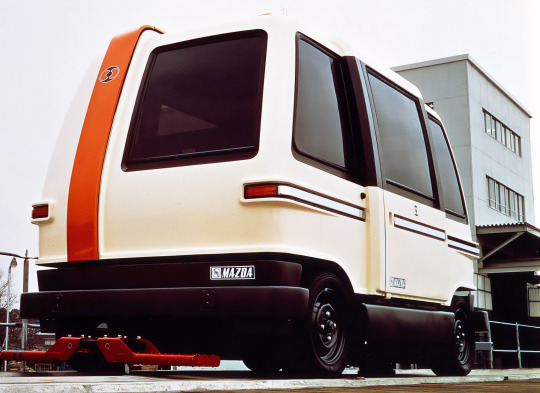

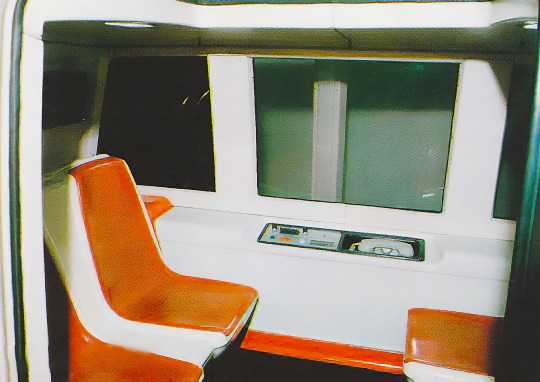

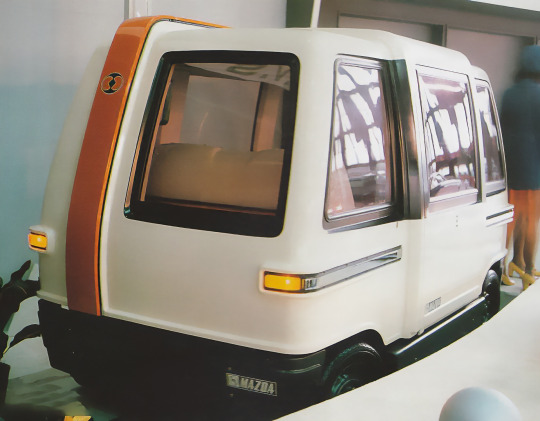
50 years on: Mazda CVS, 1973. Presented 50 years ago at the 20th Tokyo Motor Show in October 1973. A proposal for an autonomous Computer-controller Vehicle System, Mazda went so far as to build a test railway track for the CVS but it never went into production
#Mazda#Mazda CVS#50 years ago#20th Tokyo Motor Show#1973#50th anniversary#transport system#concept#autonomous#experimental vehicle#test vehicle
307 notes
·
View notes
Text
Happy Dysautonomia Awareness month. To all people with dysautonomia, i hope your dysautonomia makes you less aware of itself this month.
to all chronically ill and disabled people ever, (gives you so many spoons), here. for these trying times.
also i hope ur able to get a treatment plan that works and doctors that listen. o7
#pots#spoons#dysautonomia#dys-autumn-omia#disability#orthostatic hypotension#vasovagal syncope#familial dysautonomia#pure autonomic failure#multiple system atrophy#Innapropriate sinus tachycardia#autoimmune autonomic ganglionopathy#baroreflex failure#hereditary sensory and autonomic neuropathy#autonomic dysreflexia#diabetic autonomic neuropathy#congenital central hypoventilation syndrome#paroxysmal sympathetic hyperactivity#postprandial hypotension#chronic illness#chronic pain
35 notes
·
View notes
Link
8 notes
·
View notes
Text

#autonomic nervous system#nervous system#social anxiety memes#anxiety memes#bipolar disorder#mental health memes
128 notes
·
View notes
Text
having the hEDS trifecta + lupus is very frustrating because it's just like "okay where is this symptom coming from?" and no doctor can agree so it doesn't get treated
I have professionally diagnosed MCAS
I'd like to share the symptoms of MCAS can cause:
Constitutional : Fatigue, subjective hyperthermia and/or hypothermia, sweats, change in appetite, weight gain/loss, chemical/physical sensitivities, poor healing
Dermatologic : Urticaria, itch, flushing, hemangiomas with itch/pain, various rashes, telangiectasias, striae, skin tags, folliculitis, ulcers, eczema, angioedema, alopecia, onychodystrophy
Ophthalmologic : Irritated, “dry” eyes, difficulty focusing, blepharospasm
Otologic : Tinnitus, hearing loss, coryza, rhinitis, nasal congestion, epistaxis
Oropharyngeal: Pain, burning, leukoplakia, ulcers, angioedema, dysgeusia, dental and/or periodontal inflammation/decay
Lymphatic: Lymphadenopathy, rare splenomegaly
Pulmonary: Dry cough, dyspnea (difficulty taking a deep breath), wheezing, obstructive sleep apnea
Cardiovascular: Presyncope, hypertension, blood pressure lability, palpitations, edema, chest pain, allergic angina (Kounis syndrome)
Gastrointestinal: Dyspepsia, gastroesophageal reflux, abdominal pain, nausea, vomiting, diarrhea and/or constipation, gastroparesis, angioedema, dysphagia (usually proximal), bloating (post-prandial or spontaneous), malabsorption
Genitourinary: Menorrhagia, pelvic pain, endometriosis, vulvodynia, vaginitis, dysmenorrhea, miscarriages, infertility, dysuria
Musculoskeletal: Myalgias, migratory bone/joint pain, osteopenia/osteoporosis
Neurologic : Headache, migraine, sensory neuropathies, dysautonomia, episodic weakness, seizure disorders, non-epileptic seizures, cognitive dysfunction, insomnia, hypersomnolence, restless leg syndrome
Psychiatric: Depression, anger/irritability, mood lability, anxiety, panic, obsession–compulsion, attention deficit/hyperactivity
Hematologic: Easy bruising, polycythemia, anemia
Immunologic: Hypersensitivity reactions, increased risk for malignancy and autoimmunity, impaired healing, increased susceptibility to infection
source
"well that's just everything" ya. that's why I can't figure out where my symptoms are coming from. lupus is also like this. autonomic neuropathy is also like this. my doctors run in circles pointing at the other doctors to solve the problem but none of them want to.
#physical disability#physically disabled#chronic illness#chronically ill#mast cell activation syndrome#mast cell disease#mast cell activation disorder#hypermobile ehlers danlos syndrome#hEDS#systemic lupus erythematosus#dysautonomia#pots syndrome#postural orthostatic tachycardia syndrome#autonomic neuropathy
34 notes
·
View notes
Text
Saw cardiology yesterday
I have inappropriate sinus tachycardia (IST), a form of dysautonomia
I’m trying a beta blocker that i’m starting tomorrow
My heart itself is ok but other body systems (like my autonomic nervous system) are effecting it causing things like tachycardia which leads to a lot of symptoms
I am going back in early June and have to schedule an appointment with a new neurologist (mines moving and i would have to leave soon since she works at a children’s hospital) but i am going to see if i can have both my neurologist and cardiologist treating my dysautonomia
#disabled#cripple punk#disability#neurological disorder#physically disabled#inappropriate sinus tachycardia#dysautonomia#autonomic nervous system#update post#personal post
18 notes
·
View notes
Text



tfw you thought you're gonna destroy your future father in law at simbles after playing it for months with a kid you used to babysit but he's somehow unbeatable at every board game
#simblr#ts4 legacy#valentine gen 4#i was busy taking screenshots of chestnut ridge and didnt even know they were playing it autonomously !!#so cute#the storytelling with it is crazy because devin literally got a bad vibe from luca (chemistry system mod)#so luca trying to show off his nerdy side and make himself appear more like a Regular Person not Luca Valentine is very cute TO ME.#poor baby devin playing his guitar at sunset in the markets had no clue he would one day be (possibly) marrying into the richest#family in windenburg#saying possibly bc erm you cant speak in absolutes...
54 notes
·
View notes
Text
symptoms of dysautonomia ✿
these are all of the symptoms of dysautonomia I could find. two disclaimers: 1) please don't use this to diagnose yourself, lots of these symptoms overlap with other disorders, and 2) some of these symptoms may only apply to certain dysautonomias and not to others, in which case I will attempt to specify.
also these categories are very nonspecific and kinda weirdly ordered. I just needed to have the symptoms vaguely organized, lol.
neurological
headaches
migraines
dizziness
tinnitus
tremors
vertigo
brain fog
syncope
presyncope
motor / body
weakness/loss of muscle strength
muscle tension
lack of coordination
unsteady gait
stiffness (in MSA)
hypermobility
absence of tendon reflexes
spasms
low tone (in FD)
body/joint pain
sensation / neuropathic
abnormal sensation
neuropathy (numbness/tingling)
insensitivity to pain
diminished sense of temperature
diminished sense of touch
skin
extreme itching
skin reactions/rashes
dry skin
flushing
pale pallor
eyes
dry eye
eye pain
excessive tearing
blurred vision
tunnel vision
vision loss
impaired pupillary response
light sensitivity
ears / mouth
sound sensitivity
dry mouth
tooth decay
difficulty swallowing
abnormal saliva production
circulatory / heart
tachycardia
bradycardia
heart palpitations
irregular heart rate
poor circulation
cold extremities
discolored skin
blood pooling
low blood pressure
high blood pressure
low blood volume
pulmonary / chest
chest pain
shortness of breath
pain while breathing
air hunger
stomach / digestion
general nausea
postprandial nausea
vomiting
indigestion
bloating
abdominal pain
loss of appetite
weight loss
impaired motility/gastric emptying
food intolerances
constipation
diarrhea
frequent urination
painful urination
painful bowel movements
irregular bowel movements
reproductive
irregular periods
painful periods
sexual dysfunction
psychological
anxiety
depression
sense of impending doom
mood swings
poor memory
irritability
sleep
insomnia
night sweats
circadian rhythm disorders
unrestful sleep
general / miscellaneous (aka idk where to put this)
adrenaline dumps
"coat hanger" neck/shoulder pain
temperature intolerance/dysregulation
low body temperature
exercise intolerance
caffeine intolerance
excessive sweating (hyperhidrosis)
lack of sweating (hypohidrosis)
inflammation
galbladder inflammation
galbladder pain
low blood sugar
excessive thirst
#autonomic dysfunction#autonomic nervous system#ans#dysautonomia#pots#pots syndrome#postural orthostatic tachycardia syndrome#ist#inappropriate sinus tachycardia#vasovagal syncope#nervous system#disability#disabled#actually disabled#disability awareness#dysautonomia awareness
13 notes
·
View notes